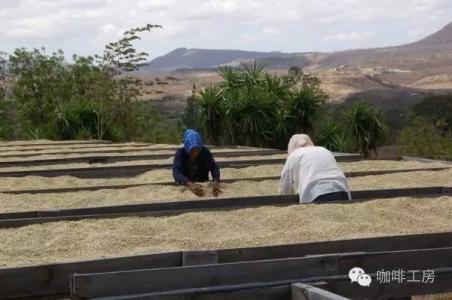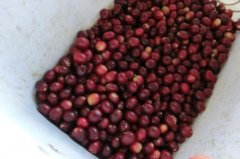Hassanda Coffee Garden, Ecuador Coffee Fine Coffee Bean producing area planting varieties, climate, altitude environment is simple

Bananas, cocoa, coffee, cotton and other products from all over the country are collected and distributed here. Guayaquil has also played an important role in the history of friendly exchanges between the peoples of China and Ecuador. As early as the 18th century, Chinese clothing, textiles and other goods were shipped to Ecuadorian cities through Guayaquil. In August 1978, the Chinese cargo ship Jialing River arrived here for the first time. Most of the import and export goods of the two countries are the Ecuadorian national emblem transshipped through Guayaquil. Ecuador's national emblem was launched in 1900, similar to the national emblem of Colombia. A ferocious "American Condor" vulture stands above the national emblem. It is the national bird of Ecuador, symbolizing sovereignty and independence. The design of Ecuador's national emblem is unique, which fully shows the amorous feelings of the country: the snow-capped Mount Chimborazo, Ecuador's highest peak, stands towering on the banks of the Pacific Ocean against the blue sky, with verdant trees at the foot of the mountain. a large river winds out from the depths of the mountains and gradually merges into the blue sea. The earliest steam ocean-going ship of South America, which Ecuadorians are proud of, is moored at sea.
As the local arable land is very limited, Galapagos coffee is very rare. Since Manuel J.Cobos first cultivated coffee here in the late 19th century, the coffee seeds here have never been hybridized or changed. Therefore, coffee on Galapagos Island is considered to be one of the purest Arabica coffee beans in the world. Galapagos coffee has excellent quality, grows in fertile volcanic soil, and is rich in minerals such as phosphorus. The cultivation of coffee is not affected by any chemicals. Mount Chimborazo, located in the West Cordillera in the Andes, has long been mistaken for the highest peak in the Andes. It is a dormant volcano with many craters and glaciers at the top of the mountain, which is more than 4694 meters. Port Guayaquil is the largest seaport in Ecuador. It faces the Pacific Ocean and backs against Mount Santa Ana. The nearby island of Pune serves as a natural barrier to protect the harbour from storms. There is a wharf in the south, which is more than 900 meters long. Ships from different parts of the world flying various flags are moored in the harbor. The port railway leads to the capital Quito, and highways connect Quito with other cities in the country.
The Galapagos Islands are located in the Pacific Ocean, about 1,000 kilometers off the coast of Ecuador. The archipelago consists of 13 major islands and small islands as well as reefs covering 8000 square kilometers and is one of the noblest national parks in the world. 97% of the territory belongs to Galapagos National Park, a protected area. The United Nations Educational, Scientific and Cultural Organization has declared this place a World Natural Heritage site.
These islands are volcanic landforms formed by magmatic eruptions. Even now, constant volcanic eruptions are shaping the geography of the archipelago. The Galapagos Islands are the products of one of the greatest volcanic activities in the world. The climate here is largely affected by ocean currents, including the Humboldt cold current and the El Ni ñ o warm current.
Galapagos is rich in species, warm and cold world of animals and plants, here is a natural paradise. The most famous animal is a prehistoric creature, the giant tortoise, also known as the Galapagos tortoise (one of the oldest animals in the world, has lived here for millions of years.) Iguanas are the only lizards that live in the sea, as well as land lizards and Darwinian finches. Other animals are blue-footed boobies, frigate birds, albatrosses, the only penguins that live in hot water, cormorants, and sea lions.
Important Notice :
前街咖啡 FrontStreet Coffee has moved to new addredd:
FrontStreet Coffee Address: 315,Donghua East Road,GuangZhou
Tel:020 38364473
- Prev

The results of cup test on grinding degree and roasting degree of fine coffee beans from Ecuador's Hasenda coffee garden
ES coffee is a clean organic coffee grown on the slopes of the Latin American Andes. It is 100% pure coffee, and the quality of our coffee has been safeguarded and enhanced through efforts to improve the economic and working conditions of the plantations, while maintaining the small-scale coffee plantations and the diversity of the organisms in the gardens. In addition, it is one of the most important economic sources of coffee origin.
- Next

Puerto Rico Coffee Bean Manor San Pedro Manor Fine Coffee Flavor, taste and aroma description characteristics Jane
Some old varieties of Arabica coffee beans are grown here, although the yield is lower than other varieties, but generally of high quality. People here have been using an ecological and intensive planting method, using only some low-toxic fertilizers and chemicals, and taking mixed crop planting measures to make the soil more fertile. When it's time to pick coffee beans, people wear them back and forth between coffee trees.
Related
- Does Rose Summer choose Blue, Green or Red? Detailed explanation of Rose Summer Coffee plots and Classification in Panamanian Jade Manor
- What is the difference between the origin, producing area, processing plant, cooperative and manor of coffee beans?
- How fine does the espresso powder fit? how to grind the espresso?
- Sca coffee roasting degree color card coffee roasting degree 8 roasting color values what do you mean?
- The practice of lattes: how to make lattes at home
- Introduction to Indonesian Fine Coffee beans-- Java Coffee producing area of Indonesian Arabica Coffee
- How much will the flavor of light and medium roasted rose summer be expressed? What baking level is rose summer suitable for?
- Introduction to the characteristics of washing, sun-drying or wet-planing coffee commonly used in Mantenin, Indonesia
- Price characteristics of Arabica Coffee Bean Starbucks introduction to Manning Coffee Bean Taste producing area Variety Manor
- What is the authentic Yega flavor? What are the flavor characteristics of the really excellent Yejasuffi coffee beans?

